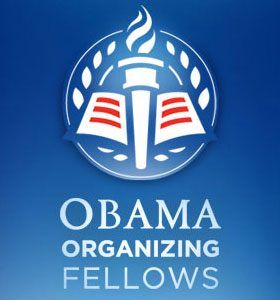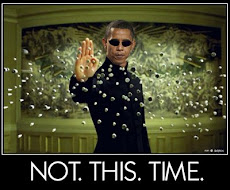Oklahoma had been plagued by lynchings
The Tulsa race riot was a large-scale racially motivated conflict between the white and black communities of Tulsa, Oklahoma, including aerial attack, beginning May 31, 1921. During the 16 hours of the assault, over 800 people were admitted to local hospitals with injuries,more than 6000 Greenwood residents were arrested and detained in a prison camp, an estimated 10,000 were left homeless, and 35 city blocks composed of 1,256 residences were destroyed by fire caused by bombing.
The Tulsa race riot occurred in the racially and politically tense atmosphere of northeastern Oklahoma, some of which was a growing hotbed of anti-black sentiment at that time. The Ku Klux Klan made its first major appearance in Oklahoma on August 12, 1921, less than three months after the riot.
As in several other states and territories during the early years of the twentieth century, lynchings were not uncommon in Oklahoma. Between the declaration of statehood on November 16, 1907, and the Tulsa race riot some thirteen years later, thirty-one individuals — twenty-six of whom were black — were lynched in Oklahoma. During the twenty years following the riot, the number of lynchings statewide fell to two.
Tulsa-Greenwood before the riot
Greenwood, Okla.: The Legacy of the Tulsa Race Riot
In 1921, Greenwood, a successful, all-black enclave in Tulsa, was the site of the deadliest race riot in U.S. history. For the inhabitants of "the Black Wall Street," life would never be the same.
- By: Monée Fields-White | Posted: February 24, 2011 at 9:50 AM
- Monée Fields-White is a Chicago-based writer who covers a wide array of topics, including business and economic news.
The 90th anniversary of the Tulsa Race Riot on May 31, 2011, here's the story of a sad chapter of American history, pulled from The Root's archives.
J.B. Stradford, the son of a freed Kentucky slave, rose to prominence in Oklahoma during the early 1900s as one of the key developers of the all-black Tulsa enclave Greenwood. A lawyer and businessman, Stradford owned the 65-room hotel that sat right in the heart of the thriving community that would later become known as "the Black Wall Street."
But in a single day, all of that would change. On May 31, 1921, the arrest of a young black man on a questionable charge of assaulting a young white woman touched off the deadliest race riot in U.S. history. Whites charged through the community in retaliation, leaving an estimated 300 people dead, another 10,000 black residents homeless and 35 city blocks in ruin.
Stradford and 69 other black men were subsequently charged with inciting the riot. Stradford, however, jumped bail after his arrest and fled Tulsa for Kentucky. According to his great-granddaughter Laurel Stradford, his son (her grandfather), who was also a lawyer, used legal maneuvering to help his father avoid having to stand trial, including filing a petition for a writ of habeas corpus to keep him from being unlawfully detained.
"When I was a little girl, our grandmother used to tell us that J.B. had said that there was no greater gift that a man can be given than to have a son who saves his father's life," says Laurel Stradford. "There would be a lot of remembrance of my great-grandpa and the role he played in Tulsa, and the role my grandpa had in getting him free from being lynched."
But although J.B. -- who went on to run a successful law practice in Chicago -- managed to avoid facing "justice" in Oklahoma (he never returned to the state), the charges hung over him until he died. The Stradford family fought to clear J.B., but it wasn't until 1996 -- 75 years after the riot, and six decades after his death in 1935 in Chicago at the age of 75 -- that he was cleared of all charges. (Ultimately, none of the men indicted were convicted of anything.)
That 75th-anniversary year was also when the nation learned about the Tulsa Race Riot, which would come to be considered the most destructive race riot in U.S. history. "For years, silence engulfed this incident," says Hannibal B. Johnson, author of Black Wall Street: From Riot to Renaissance in Tulsa's Historic Greenwood. "In 1921, Tulsa was booming, so anything that would detract from its allure, such as the riot, was minimized."
A Black Mecca
Indeed, Tulsa had been attracting thousands -- blacks and whites -- to the rich oil fields. By 1920, the overall population had swelled to more than 100,000 residents. Black Americans, migrating from Southern states as far as Georgia and Mississippi, were also attempting to escape the harsh realities of Southern racism. But old Jim Crow laws followed them northwest. Tulsa was divided into two cities. Whites held court in the southern end of the city, closer to the larger main downtown area, while African Americans were segregated in the northern section of town.
The racial split, however, gave rise to black Tulsans' famed entrepreneurial mecca. Anchored by Greenwood Avenue, black-owned businesses stretched along the more than mile-long roadway. They included grocery stores, restaurants, medical and law offices, and two newspapers. Many black entrepreneurs in addition to Stradford -- including real estate developer and Greenwood founder O.W. Gurley -- thrived and reached regional and even national stature. Booker T. Washington, who had lectured in Tulsa, was the first to call Greenwood "the Negro's Wall Street." That moniker later became "the Black Wall Street."
Many white Tulsans, who referred to the district as "Little Africa," were not happy about the growth and prosperity of the community, according to Andrew Rosa, assistant professor of history at Oklahoma State University. "You had a pretty stable, upwardly mobile people in Greenwood, and the city's whites had their eye on Greenwood," says Rosa. "That was sort of the spirit of the friction."
White Rage Unleashed
The underlying racial and economic tension finally boiled over on May 30, 1921. Dick Rowland, a 19-year-old shoe shiner in downtown Tulsa, had gone to use the only bathroom for blacks, located at the top of an office building. He crossed paths with white elevator operator Sarah Page, 17, whom a store clerk claimed to have heard scream. The clerk said that he found a distraught Page and saw a young black man running from the building. There is no record of what Page told the police.
Rowland was arrested but never charged. The incident, however, made the front page of the Tulsa Tribune -- along with an editorial entitled, "To Lynch Negro Tonight."
Right before dawn on June 1, a mob of nearly 10,000 white men launched an all-out assault on the Greenwood District, systematically burning down every home and business. They dropped firebombs and shot at blacks from planes that had been used in World War I. Those blacks who were captured were held in internment camps around the city by the local police and National Guard units.
Martial law was eventually declared. The National Guard confirmed that 37 blacks and whites were killed, although historians (pdf) have put that number at closer to 300. Many of the dead black Americans were buried in unmarked graves around town, and some were laid to rest in an anonymous section of Tulsa's Oak Lawn cemetery. Some photographers made their pictures of the dead into postcards.
The riot "just shows you how irrelevant, not only from the view of Oklahoma but that of the nation as a whole, black life was. It was seen as expendable," says Rosa.
After the riot, black Tulsans, who were living in tents and forced to wear green identification tags in order to work downtown, still managed to turn the tragedy into triumph. Without state help, they rebuilt Greenwood, and by 1942 the community had more than 240 black-owned businesses.
Justice Denied
In subsequent decades, however, the community declined as the pioneers of Greenwood died and many of their descendants moved away. The district struggled most critically during the 1960s as Tulsa became more integrated, which led to a decline in the Greenwood population and also undermined many of the local black family-run businesses. In the 1970s, a large segment of Greenwood was demolished to make way for an interstate highway that became a main connector for the downtown area.
An Oklahoma state commission conducted an investigation of the riot from 1997 to 2001, questioning survivors about that day back in 1921. The commission recommended specific reparations to the community, the living survivors and their descendants.
The state did subsequently enact a law in June 2001 that provided about 300 scholarships for descendants, developed a memorial and pushed for development in Greenwood -- but the law fell far short of what the commission had recommended. The remaining survivors have continued to fight for further restitution, which is addressed in the 2008 documentary Before They Die!
For some descendants, the demise of such a prosperous business community highlights the struggles that black America continues to face today. "The difference is that our society now is desegregated much more, and the challenge now is for our businesses to do successful business with a majority of firms," says John Rogers Jr., the founder of Chicago-based Ariel Investments, LLC -- and the great-grandson of J.B. Stradford. "There's still a remnant of historical discrimination."
Another Account
The Tulsa race riot started when Dick Rowland, a 19-year old black shoe shiner in a shine parlor entered the elevator at a Drexel building to the colored washroom on the top floor around 4pm. In the elevator was a 17 year old white elevator operator named Sarah Page who was on duty. No one really knows what exactly happened in the elevator but the two must have been acquainted with each other at one point by sight. Most would say Rowland tripped in the elevator, and grabbed the arm of Page to prevent himself from falling. Page screamed and a clerk at one of the floors heard it, seeing the black man hurriedly leave the building. She assumed the young woman was assaulted and immediately called the authorities.
The next morning Rowland was detained by detective Henry Carmichael and Henry C. Pack and was taken to the jail for questioning. News spread about the event that day, along with an article titled ‘To Lynch Negro Tonight’ which was about whites assembling to lynch Rowland. As this newspaper hit the streets, white people gathered near the county Courthouse, seeking answers about the incident. Some were spectators only curious, but others were looking to participate and show support of the lynching of the young teenager. By sunset, hundreds of whites were assembled to have the making of a lynch mob. The sheriff Willard M. McCullough went outside and tried to talk the crowd into going home, but they did not listen. Eventually three white men entered the courthouse demanding Rowland be turned over, but deputies were able to turn them away. Eventually they were being vastly outnumbered by the crowed on the street.
A few blocks away, members of the black community gathered to discuss the situation at the courthouse. They came to a conclusion they were going to lynch Dick Rowland like they did to Roy Belton. Armed with rifles and shotguns they marched to the courthouse to support the sheriff and his deputies while defending Rowland from the angry whites. The sheriff though, assured them Rowland was safe and made them to return to Greenwood. The whites around the courthouse turned into 2000, many of them armed with weapons. Small groups of armed black started to go back to the courthouse in automobiles, ready to take action to protect Rowland.
It is said a white man told one of the armed black man to surrender his pistol, but he refused and fired a shot. It could have been accidental, or meant as a warning shot, but the ones followed were not, and eventually the courthouse was taking fire.
Immediately the white men returned fire, and the blacks continued firing back. It lasted only a few seconds, but already several men lay dead or dying in the street. The black mob retreated with the armed white mob following from behind. Innocent people from around were caught off guard and started to run as well. Panic came and mobsters started to fire at any black in the crowd. At 11 p.m. members of the National Guard assembled, joining patrols of the streets. Though, they were mainly being organized to protect the white districts near Greenwood. They rounded up any black who hadn’t made it back to Greenwood and took them to the armory for detainment.
The riot continued until Wednesday, June 1, 1921, progressively getting worst each minute. Whites eventually pushed into Greenwood, killing many innocent blacks along the way.
In 1921 the ABB (The African Blood Brotherhood for African Liberation and Redemption ) gained notoriety and a boost in membership after its Tulsa branch was linked to the armed resistance of local blacks during the Tulsa race riot.
Lynching believed to be at Mannford, Oklahoma
Click Here for;
Final Report of the Oklahoma Commission to Study The Tulsa Race Riot of 1921




















































